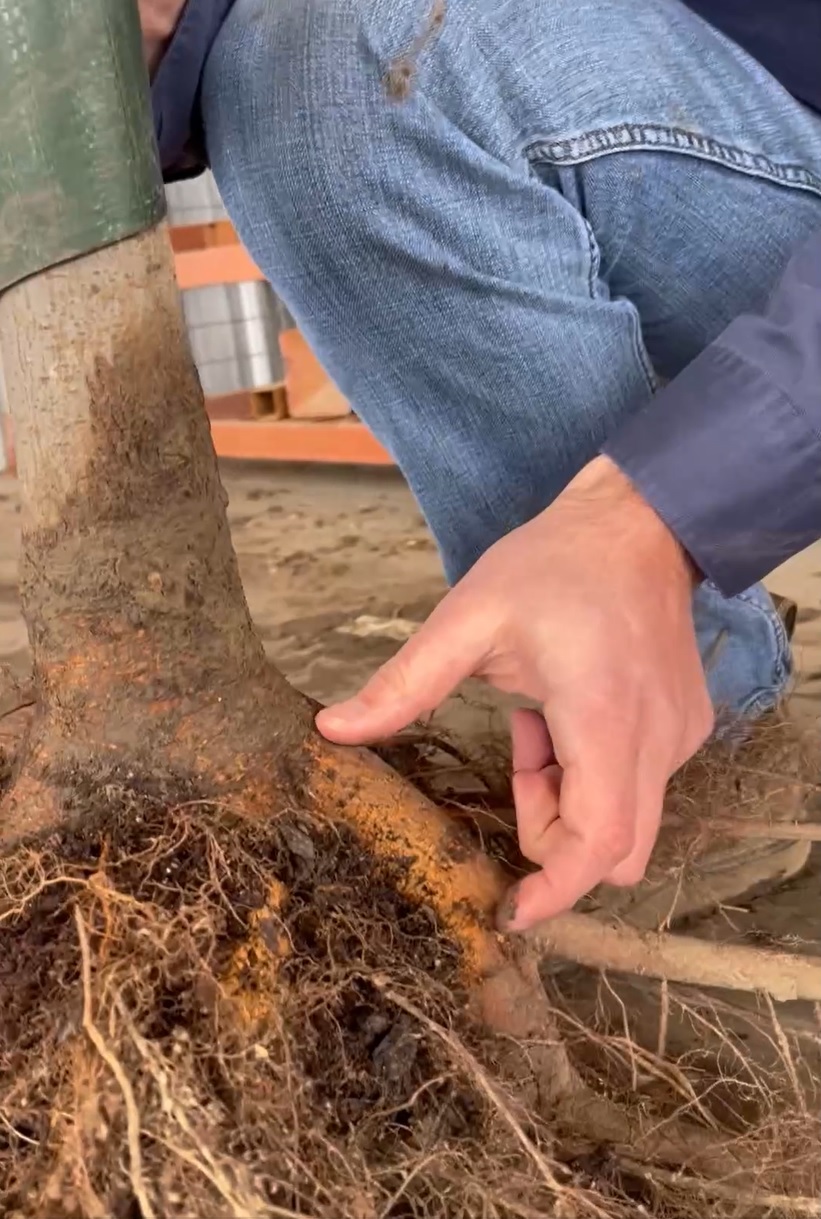Bare-root trees are a Godsend for people looking to start their own Orchard, Food Forest or simply beautifying their landscape! Much more cost effective than container or field grown trees, and with a very good survival rate there are many benefits in keeping with this time-honored tradition! We’re going to take a quick dive into them and discuss the many benefits of planting a bare root tree, as well as their basic care.
What is a bare-root tree?
A bare root tree is a tree that has been field grown for a few years to establish a good strong root system, and a healthy straight trunk and nice even branching. This has been done since time immemorial in agriculture/arboriculture to cultivate quality trees. When trees are grown well, in carefully controlled fields, with the correct soil types (sandy loam is preferable) seedlings can create a substantial root mass in a few short years.
Why plant bare-root trees?
Planting bare root trees has been a staple for arboriculturists as well as home gardeners for years, and the reasoning is simple, you get a healthy tree that is quick to establish in its new home, with a minimal amount of loss or expense. Since the trees are dormant (not actively growing) they suffer from almost no transplant shock, and variety dependent, climatize very quickly to their new home!
How to plant bare-root trees?
With a few exceptions, planting a bareroot tree is very similar to planting a containerized or B&B tree. See the steps below to get your new tree off to the best start possible!
- Select a site that gets at least 8 full hours of sun for optimum performance and fruit production. The area should also not be low lying ie tends to hold moisture too long or remain “boggy”. Wet roots are a quick way to failure with fruit trees
- Dig a hole that is about 1.5 to 2 times the width of the root mass, but only about 80% of the depth. This is important because all fruit trees are grafted onto a root stock that helps control size, or increases the vigor and production capabilities of your tree
- Create a friable blend of soil by incorporating a blend of 50% compost to 50% of the existing native soil
- Form a dome in the bottom of the hole, your bare-root trees flare will sit on top of this, making sure that the graft is about 2’’ above the grade of the soil
- As you backfill the hole with your compost-soil blend, make sure that you push soil in between the roots of your tree, to eliminate air pockets, and to seat your tree well into its new home. Add a few inches of soil at a time, all the while ensuring that the graft on the trunk is still being maintained at 2’’ above soil grade, and tamp the soil as you add it
- Once the tree is in, water once to settle the soil, adding more if it is required
- Add a top dressing of mulch will aid in water retention as well as keeping the roots warmer during the Winter, and cooler in the Summer. Place mulch 2’’ deep along the planting area, while leaving 2’’ away from the trunk of the tree. This helps with the soil being able to breathe, cutting down on soilborne pathogens
- Add a solution of 1 qt BioLife 800 to 5 gallons of water, and slowly pour over the entire planting zone. This will promote beneficial fungi, bacteria, as well as limiting transplant shock
- Stake the tree, so the truck has a little movement, but will not topple over in harsh conditions
- Water as needed through the growing season, but it’s unnecessary to fertilize the first year. The plant will get the nutrients it needs from the compost already provided
Basic care of bare-root trees
Time is of the essence when planting bare-root trees! I’m going to teach you some of the Do’s and Don’ts of bare-root care! It’s best to plant them as soon as possible, but waiting a few days is fine so long as the following is provided for your tree
- Don’t let the roots dry out!
- Don’t store them in a bucket of water, the tree’s roots still need to breathe!
- Don’t leave them outside if temperatures drop below 28 degrees, as this can cause tissue damage!
- Do prune any broken branches from shipping, the plant is dormant, and will not cause harm to the tree
- Do keep the roots moist, wrapped in burlap or plastic sheeting
- Do keep your trees in a cool, shaded area till it’s time to plant them, an unheated garage, basement or shed will suffice
And last but not least, please DO contact Colonial Gardens with any questions you may have regarding your new tree, and how we can help you with all of your Plant Care Solutions!!!

